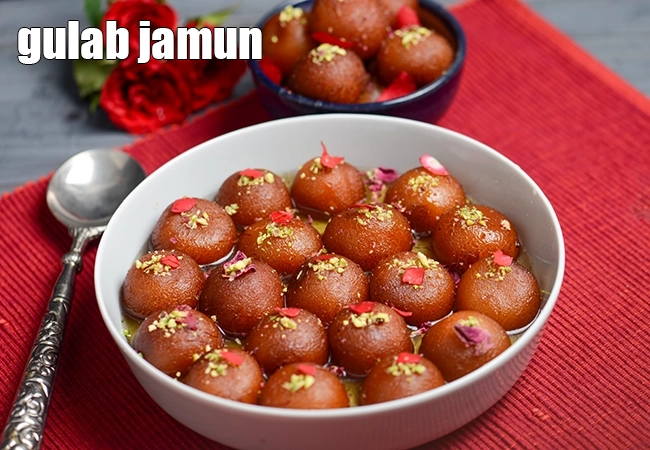arrowroot flour

Table of Content
What is Arrowroot Powder, Arrowroot Flour? glossary, uses, recipe
Arrowroot flour, known in India by various regional names like kooya (Kerala) or paḷua (Odisha), holds a significant place in traditional Indian cooking and health practices. Derived from the rhizome of the Maranta arundinacea plant, it's a fine, white, odorless, and gluten-free starch, often used as a healthier alternative to cornstarch or refined wheat flour. Its gentle nature and easy digestibility have made it a staple in Indian households for generations, particularly for those with sensitive stomachs or during periods of recovery.
One of the primary uses of arrowroot flour in India is as a thickening agent. It's frequently employed in soups, gravies, and curries to achieve a smooth, velvety consistency without altering the dish's flavor or color, as it cooks to a clear finish. Unlike some other starches, arrowroot thickens at lower temperatures, making it a versatile choice for various preparations. Its ability to create a silky texture is also prized in some traditional Indian sweets and desserts, ensuring a delicate mouthfeel.
Arrowroot flour is particularly popular in India for farali (fasting) recipes. During religious fasts, many individuals avoid grains like wheat or corn, making arrowroot an ideal substitute due to its gluten-free and easily digestible properties. Recipes like Farali Pattice (a savory patty) and Khandvi (a thin, rolled snack, sometimes adapted for fasting) often utilize arrowroot flour for binding and texture. It's a trusted ingredient for ensuring that fasting meals are both nutritious and compliant with dietary restrictions.
Beyond savory applications, arrowroot flour also features in some delightful Indian sweets. In Kerala, a traditional dessert called Koova Kurukkiyathu or Arrowroot Halva is made from arrowroot powder, jaggery, and coconut, offering a unique and comforting treat. Similarly, in Konkani cuisine, a traditional arrowroot jelly cake dessert known as Dudali is prepared. These sweet preparations highlight the versatility of arrowroot in creating both firm gels and smooth, comforting confections.
The health benefits of arrowroot flour are widely recognized in India. It's highly valued for its easy digestibility, making it an excellent choice for infants, convalescents, and individuals with digestive issues like diarrhea or indigestion. Rich in dietary fiber and resistant starch, arrowroot can promote gut health, aid in weight management by providing a feeling of fullness, and even support the immune system. It's also a good source of B vitamins (including folate), potassium, and manganese, contributing to overall well-being.
In essence, arrowroot flour is more than just a culinary ingredient in India; it's a part of the country's wellness tradition. Its versatility as a thickener, a gluten-free alternative, and a nutritious component for both savory and sweet dishes, particularly during fasting periods, solidifies its importance. As awareness of its health benefits grows, arrowroot flour continues to be a cherished ingredient in Indian kitchens, adapting to both traditional and modern culinary trends.
Also known as
Arrowroot Powder, Araruta, Indian arrowroot, Araru.
How to select Arrowroot Powder
• Arrowroot flour is available in more supermarkets these days.
• Select flour that is fine and white, similar to cornstarch.
• One way to test for arrowroot is that it gives off a faint smell when mixed with water, although it is odorless when dry.
• Some manufacturers adulterate arrowroot with other starches (like potato starch), so ensure that you purchase from a reliable merchant – if mixed with other starches, your arrowroot recipes may go wrong!
• In some stores, arrowroot can be found in the form of fresh whole root, labeled as Tse Goo or the Chinese potato.
9 Uses of Arrowroot Flour
1. Arrowroot flour is a starch that is primarily used as a thickener in many foods such as mithai, puddings and sauces.
gulab jamun recipe | gulab jamun with khoya | Punjabi mithai | how to make gulab jamun |

2. It can be used in place of plain flour or cornstarch in various recipes. 1 tsp of arrowroot can be substituted for 1 tbsp of plain flour, and 2 tsp of arrowroot can be substituted for 1 tbsp of cornstarch. The powder should be mixed with a cool liquid before being introduced to a recipe, and it should be added towards the end, since overcooking can destroy the gelling properties of arrowroot. Once the mixture thickens, remove immediately to prevent thinning.
3. The advantage of Arrowroot is that it can be eaten during the fasting days as cornstarch cannot be eaten during these days. Some Faraali (fasting) recipes that use arrowroot flour are Khandvi and Faraali Pattice.
4. One of its advantages is that arrowroot thickens at lower temperatures unlike thickeners made with flour or cornstarch and as it turns clear as it sets, it will not interrupt the color of dishes it is included in.
5. The whole root can be used in recipes too. The papery layer should be peeled off before the root is boiled or fried. It can be prepared into chips, flavored with salt and/or spices.
6. The flour is completely gluten free making it perfect for those who are allergic to gluten or want to want to avoid it for some reason.
kand aloo pakoda recipe | navratri, vrat ka khana | upvas aloo kand pakora | aloo bhajiya for fasting |

7. Lack of gluten in arrowroot flour makes it useful as a replacement for wheat flour in baking. Gluten free breads like Buckwheat and Quinoa Bread can be made with arrowroot flour.
8. It is also used in the preparation of homemade ice cream since it prevents the formation of ice crystals.
9. Korean cuisine uses arrowroot in the form of noodles. Other oriental cuisines also use it for thickening acidic foods such as sweet and sour sauce etc.
How to store Arrowroot Powder
• Store the rhizomes in the refrigerator.
• In the case of flour, it can be stored in an airtight container in a cool and dry place away from humidity and direct sunlight.

Related Glossary
Follow US
Recipe Categories
- Vitamin B12 Cobalamin Rich Recipes 33 recipes
- Low Calorie, Weight Loss Indian Recipes 421 recipes
- Low Cholesterol Indian Recipes 308 recipes
- Healthy Indian Breakfast 373 recipes
- Indian Diabetic recipes 560 recipes
- Indian Pregnancy recipes 461 recipes
- Zero Oil Indian Recipes 133 recipes
- Iron Rich Indian recipes 268 recipes
- Healthy Indian Acidity recipes 137 recipes
- Healthy Sabzis 108 recipes
- Indian Healthy Veg Snack 276 recipes
- Healthy Heart Recipes 415 recipes
- Healthy Veg Indian Soups 74 recipes
- Calcium Rich Indian 373 recipes
- High Blood Pressure Indian Recipes 104 recipes
- Healthy Indian Salads Recipes 137 recipes
- Low Carb Indian Diet, recipes 163 recipes
- Hypothyroidism Diet 63 recipes
- Arthritis Diet 68 recipes
- High Protein Indian recipes 95 recipes
- Vitamin K Diet 42 recipes
- Fatty Liver Diet 39 recipes
- PCOS 136 recipes
- Gluten Free Veg Indian 197 recipes
- High Fiber 328 recipes
- Indian Cancer Patients 275 recipes
- Jaundice Diet 45 recipes
- Sprouts 61 recipes
- Typhoid 43 recipes
- Irritable Bowel Syndrome (IBS) 23 recipes
- Kidney Stone Diet 10 recipes
- Home Remedies 213 recipes
- Senior Citizen 195 recipes
- Healthy Indian Drinks and Juices 213 recipes
- Diet for Dialysis 10 recipes
- Gout Indian Recipes 17 recipes
- Potassium Rich 80 recipes
- Vegan 195 recipes
- Indian recipes to treat Vomiting 8 recipes
- Forever Young Diet, Anti Aging Indian Diet 255 recipes
- Antioxidant Rich Indian 445 recipes
- Vitamin B1 Rich Indian Foods, Recipes 101 recipes
- High in Omega 3 Fatty Acids 32 recipes
- Zinc Rich Foods 55 recipes
- Vitamin A Rich, Beta Carotene, Retinol 89 recipes
- Malaria Diet 19 recipes
- Magnesium Rich 94 recipes
- Healthy Indian Dinner 85 recipes
- Vitamin C Rich Indian recipes 118 recipes
- Low Veg Glycemic Index 86 recipes
- Lower Blood Pressure Salads 8 recipes
- Healthy Indian Lunch Recipes 29 recipes
- Lactation 25 recipes
- Vitamin E Rich 51 recipes
- Hyperthyroidism Diet 47 recipes
- Vitamin B3, Niacin Rich 41 recipes
- Post Surgery Diet 42 recipes
- Selenium 27 recipes
- Phosphorus Rich Indian Recipes, Foods 74 recipes
- Lower Blood Pressure Desserts Sweets 14 recipes
- Copper 15 recipes
- Foods Rich in Vitamin B2 Riboflavin 22 recipes
- Vitamin B6 Diet 36 recipes
- B Vitamins 231 recipes
- Vitamin B9 Rich Folate 50 recipes
- Marathoners, Endurance Athletes, Triathlete 225 recipes
- Manganese Diet 32 recipes
- Thalassemia 18 recipes
- Detox Water, Fruit Infused Water 42 recipes
- Lactose Free Dairy Free 22 recipes
- Omega 6 Fatty Acids 32 recipes
- Phytonutrients 51 recipes
- Chronic Kidney Disease Indian recipes 12 recipes
- Selenium1 0 recipes
- Quick Snacks / Quick Starters 385 recipes
- Quick Breakfast Indian 131 recipes
- Quick Sabzis 117 recipes
- Quick Rotis / Parathas 46 recipes
- Quick Indian Sweets 139 recipes
- Quick Stir-Fries 51 recipes
- Quick Vegetarian Indian Soups 72 recipes
- Quick Chutneys 67 recipes
- Quick Vegetarian Rice, khichdi Recipes 56 recipes
- Indian Snacks Under 10 Minutes (Quick Veg Recipes) 44 recipes
- Quick Indian Dips, Gravies & Sauces 105 recipes
- Quick Veg Indian Pizza 17 recipes
- Quick Veg Pasta 25 recipes
- Quick Pickles / Aachar 25 recipes
- Quick Dals / quick Kadhis 29 recipes
- Snacks under 5 minutes 33 recipes
- Quick Healthy Recipes 43 recipes
- Quick Pressure Cooker 46 recipes
- Quick Desserts 47 recipes
- Quick 3 Ingredients 63 recipes
- Quick Indian Desserts 20 recipes
- Quick 4 Ingredients 41 recipes
- Quick 5 Ingredients 42 recipes
- Kids Tiffin Box 319 recipes
- Recipes for Toddlers (1-3 Years) 32 recipes
- Sweet Recipes for Kids 456 recipes
- Recipes for Baby (10 to 12 Months) 17 recipes
- Quick Indian recipes for Kids 72 recipes
- Indian Breakfast Recipes for Kids 192 recipes
- Recipes for Weaning (8 to 9 months) 22 recipes
- Healthy Foods for Kids 196 recipes
- Snack Recipes for Kids 619 recipes
- Recipes Kids can make 36 recipes
- Kids After School 794 recipes
- Kids Jar Snacks 66 recipes
- Finger Foods for Babies, Toddlers and Kids 76 recipes
- Kids Weight Gain 43 recipes
- Kids Wraps and Rolls 23 recipes
- Kids Veg Pasta 27 recipes
- Kids Brain Boosting 68 recipes
- Protein rich food for kids 71 recipes
- Recipes for Weaning 15 recipes
- Kids Pizzas 30 recipes
- Babies, Toddler and Kids Iron Rich Foods 31 recipes
- High Fiber Foods for Kids 39 recipes
- Kids High Energy Indian Foods 103 recipes
- Kids Noodles 37 recipes
- Kids Calcium Rich Indian recipes 92 recipes
- Babies recipes, 6 to 18 months 34 recipes
- Kids Recipes for Increasing Immunity 10 recipes
- Kids Weight Loss 58 recipes
- Teething Recipes for Babies 10 recipes
- Cereals and Pulses for 8 to 9 months Baby 8 recipes
- Weaning foods at 7 months 12 recipes
- Indian Teen 315 recipes
- Starters / Snacks 2138 recipes
- Indian Breakfast Recipes 819 recipes
- Main Course Recipes 925 recipes
- Indian Salads 385 recipes
- Indian Desserts , Sweets 985 recipes
- Indian Soups 249 recipes
- Indian Beverages, Indian Drinks 483 recipes
- Indian Dinner 903 recipes
- Indian Dinner1 0 recipes
- Indian Lunch 829 recipes
- Side Dishes 449 recipes
- Indian Travel Food 433 recipes
- Indian Barbeque1 recipes 22 recipes
- Frozen Foods, Indian Freezer Recipes 67 recipes
- Whole Wheat Recipes 56 recipes
- Indian Comfort Foods 212 recipes
- Dinner Menus 56 recipes
- Easy Indian Veg 70 recipes
- Innovative Indian Recipes 27 recipes
- No Cook Indian 37 recipes
- Advanced Recipes 10 recipes
- Cakes with Eggs 13 recipes
- Microwave 229 recipes
- Oven 619 recipes
- Indian Steamer Recipes 102 recipes
- Kadai Veg 407 recipes
- Indian Barbeque Recipes 43 recipes
- Sizzler tray 15 recipes
- Mixer 566 recipes
- Pressure Cooker 315 recipes
- Tava 647 recipes
- Non-stick Pan 1393 recipes
- Indian Freezer recipes, meals 57 recipes
- Appe Mould 18 recipes
- Pan 223 recipes
- Non Stick Kadai Veg 203 recipes
- kadai Indian 150 recipes
- Refrigerator 176 recipes
- Waffle Indian recipes 6 recipes
- Handi 12 recipes
- Juicer and Hopper 65 recipes
- Grill 31 recipes
- Toaster 21 recipes
- Gas Toaster 8 recipes
- Healthy Indian steamed 72 recipes
- No Cooking Veg Indian 335 recipes
- Vegetarian baked Indian recipes 380 recipes
- Boiled Indian recipes 129 recipes
- Deep Fry 260 recipes
- Indian Tawa 265 recipes
- Shallow Fry Indian 25 recipes
- Microwave1 172 recipes
- Saute 273 recipes
- Indian Pressure Cooker 171 recipes
- Stir-fry 101 recipes
- Roasting 0 recipes

















